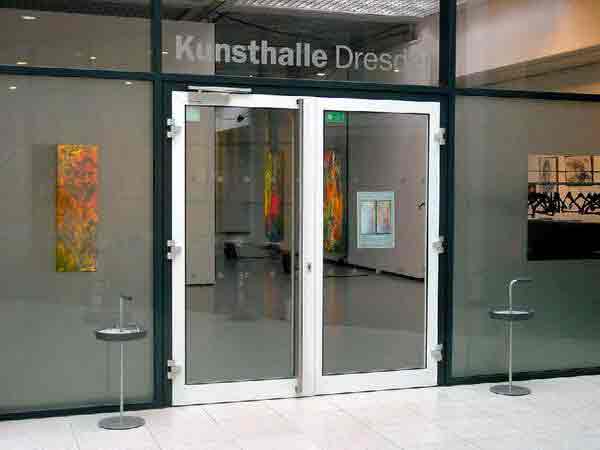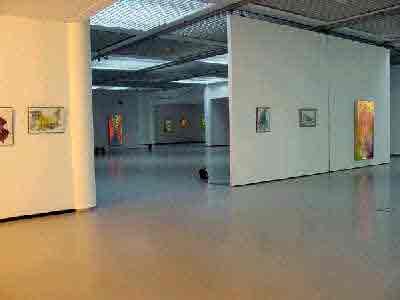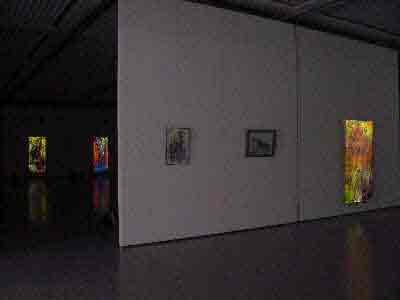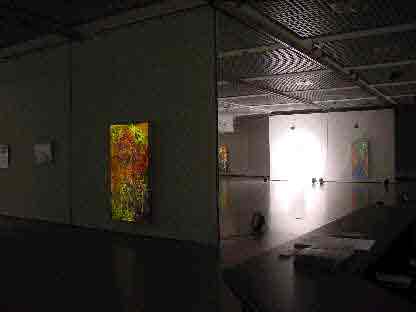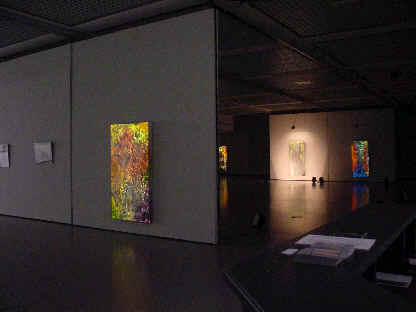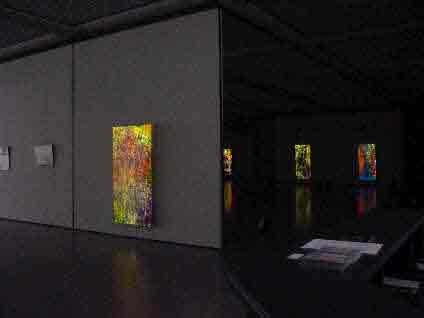von Hoetmar
KUNSTHALLE DRESDEN
2000 - 12 - 09
Dr. des. Margit im Schlaa
“Painting of the Fourth Dimension”
During
the process of my involvement with Norbert von Hoetmar’s art, I recalled a
quotation by the French artist Paul Cézanne, who emphasized a distinctive mark
of modernism: “You must hurry if
you still want to see something. Everything
is vanishing.” Cézanne alludes
to the drastic effects of the technical innovations of modernism and their
effects on sensual perception. In a manner similar to Baudelaire, he lamented
that the increasing acceleration of urban life had resulted in profound
disturbance of contemplation and healthy distraction. This perceptional
phenomenon of modernism and post-modernism – termed “the aesthetics of
vanishing” by the French media theorist Paul Virilio – has been reversed in
von Hoetmar’s art.
|
|
|
Von
Hoetmar’s nude drawings increasingly play a key role in his remarkable
definition of painting. He followed
this approach as an autonomous effort until 1996, one which he resumed recently
and has called a “disciplinary action.”
This approach has served a dual effort:
to enrich his work and to employ nude studies as patterns for his light
paintings. The interaction of these
genres is enhanced by their similarity of production. Von Hoetmar employs what he calls “the guided opportunity”
each time he prepares his canvas. This
technique results from the necessity of painting without being able to make
subsequent changes in his work.
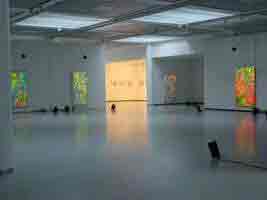 |
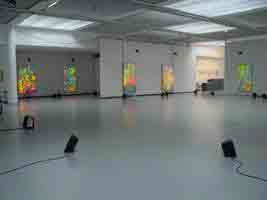 |
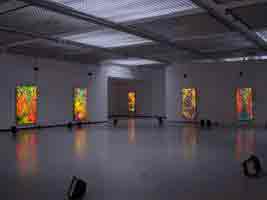 |
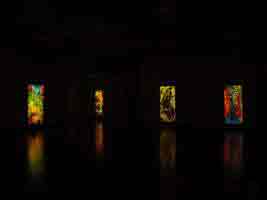 |
To
shorten the natural 24-hour cycle, he uses beamers to imitate daylight; the
tubes, invisibly fixed behind the transparent canvas, are permanently switched
on. Both floodlit and otherwise
illuminated, the paintings reveal their underlying structure and develop a
fascinating play of shape and colour. An
abstract silvery surface with a delicately-built grid structure during the
daylight will give the impression that solid ice is thawing.
The deeper layers of the multi-coated acrylic resin colours become
visible with increasing darkness and disclose fabulous new shapes that contrast
with the monochromatic surface in a marvellous, brilliant, beaming luminosity.
